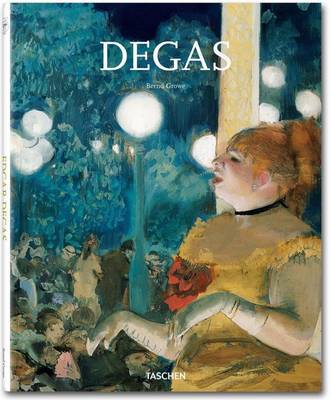Taschen Basic Art
1 total work
Capturing fleeting moments. This title deals with Degas' mastery in the depiction of movement. In terms of both theme and technique, the key to understanding the early work of Edgar Degas (1834-1917) is classical painting. Although he was eventually associated with the Impressionists and even participated in their joint exhibitions, Degas never adopted a purely Impressionist approach. Degas' work, reflecting an extremely personal and psychological perspective, emphasizes the scenic or concentrates on the detail. Thus, Degas' painting is often discussed with reference to the rise of short-exposure photography. Thematically, nature proved less interesting to the artist than the life and inhabitants of the modern metropolis. Degas primarily sought his motifs at the race track or circus, in bedrooms, or in ballet salons - and dancers always remained his favorite theme. About the series: Every book in TASCHEN's "Basic Art Series" features: a detailed chronological summary of the artist's life and work, covering the cultural and historical importance of the artist; approximately 100 color illustrations with explanatory captions; and a concise biography.
